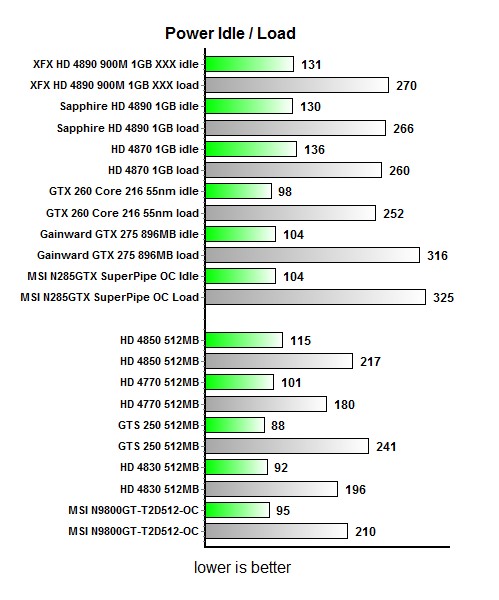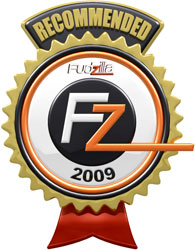Index
Page 3 of 3
GPU Temperatures
HD 4770 thermals are good, as the card hits 74 degrees Celsius at max load. To put things into perspective, HD 4850 and HD 4830 can go over 90°C so these temperatures come as a result of the 40nm production process, and from using dual slot cooling, which is usually quiet except when fan rpm goes up to the max, which isn't quite ideal. Note that these maximum revs don't occur very often, but rest assured you'll know when they do.

Overclocking
Not much to say about overclocking – Catalyst driver allows for 830MHz GPU and 850MHz memory, and our card took it in stride. Using the overdrive engine, which calculates maximum overclock, we got an answer that the card will run at 820MHz GPU and 840MHz memory with no trouble whatsoever.
Overclocking brings up to 8% better results in FarCry 2.
Power Consumption
Radeon HD 4770 requires one 6-pin power connector, but as you can see for yourself, the consumption is quite low compared to the HD 4850. The only downside is the relatively high consumption in idle mode, and the reason for that is the memory which retains its 3D clocks in 2D mode as well.

Conclusion
The HD 4770 is just a foretaste of things to come. You can imagine that high end cards stand to gain a lot from the new 40nm process, which has now transformed the sub-$100 market in the guise of the HD 4770.
The HD 4770 offers exceptional value for money, 826 million transistors in 40nm and DDR5 memory for just $99. It's powerful enough for most users and has enough muscle to run just about any game out there on sub-HD resolutions. It is overclockable, and we have no doubt AIBs will offer a number of interesting non-reference designs in the following weeks and months. As expected, it is a bit slower than the HD 4850, but a lot faster than the HD 4670, 4830 and similarly priced Nvidia cards. What's more, we're finally starting to see ATI endorsed DX10.1 offer some significant performance boosts in certain games.
Another scenario is also quite tempting. With its low price, power consumption of just 80W, and good thermals, the HD 4770 could even be an interesting basis for a Crossfire setup. The total price of such a setup would be under $200, and the power consumption just 160W. For comparison, a single HD 4870 is rated at 157W, while a single HD 4890 costs over $200.
We really can't think of any major drawbacks. ATI did a fine job, by the book, and ended up with a cheap, yet very fast card. At $99 or €89 it truly offers great value, especially considering it has the technological edge, and we're guessing it will make a lot of AMD accountants smile.
Without a doubt, ATI's firstborn 40nm card deserves our Recommended award, and it offers a glimpse into a brighter, 40nm future even for gamers on a budget.

« Prev Next
